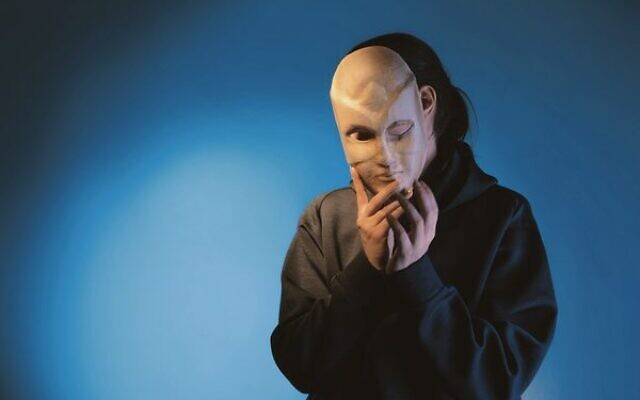Purim was the one day I wasn’t in disguise
From Purim to the Pride March.
ON Purim – a day when it is customary to hide your true identity – I found mine. As the fifth child in a family of eight, I struggled with my own identity both within my family and our closed ultra-Orthodox Adass Israel community.
Conforming to the strict dress codes expected by my family and surrounding community did not agree with my core perception of self.
Back then, I was considered what you’d call a “tomboy”. I loved to be active. I loved running. I loved climbing trees. I felt absolute discomfort in skirts, stockings (no matter the weather) and “girlie things”.
Riding a bike for girls was not allowed due to modesty codes, but I still managed to get some time on my brother’s bicycle every now and then and I loved it.
George was my favourite character in Enid Blyton’s Famous Five novels. With her short black cropped hair, her competency and her sense of adventure. I loved how everyone accepted her. She was “one of the boys”. I wanted to be George.
As a child, I didn’t have the language nor did I understand that my resistance to wearing skirts wasn’t only about the sense of feeling stifled from a religious perspective. It was also taking away my capacity to understand and explore my identity. My visceral rejection to the clothing wasn’t only because I didn’t understand the religious expectations. It wasn’t that I was a rebel. It just didn’t feel like I was a girl like the other girls around me.
After age three, I could no longer wear pants. That’s the age girls begin adhering to dress codes. Compulsory long sleeves and high-necked tops. I felt discomfort and suffocated. My ability to understand my identity was stifled.
Looking back at my childhood, Purim was the only day I could dress to match the way I felt. To be able to wear a pair of my brother’s pants for the day and dress up as a “boy” dresses, was always the highlight of the year for me.
It felt like a sin yet gave me a sense of liberation. Just for the day.
I now understand that my younger self’s sense of freedom in wearing boys’ clothing had a lot to do with my identity as non-binary.
I believe it was actually a positive saving grace that sexuality and the concept of gender non-conformity was non-existent. There was no language around for such expressions or conversations. That kind of subject matter was never discussed.
Nobody in my family or community could accuse me of being “evil” – at least that part hadn’t been tainted for me.
All of us wear masks at times, to hide ourselves away. Masks protect us. We are forced to wear masks to fit in with society.
But my experience was feeling forced to be dishonest. It’s a strange contradiction, not revealing who I was, was the mask I needed to wear – for self-preservation and protection.
Clothing is not just clothing. It tells a story. Clothing can be used as a “mask”. Clothing can be used to enhance. Clothing can be used as a statement of self-expression. Wearing a skirt feels so incongruous with who I am. Then again, there are days when I feel more feminine. And on those days, I feel a lot more comfortable wearing a skirt, wearing a pretty top and sometimes even putting make up on.
But on those days, when it is my choice to wear more typically feminine clothing, I am wearing them because I am being true to the essence of myself. Not because it’s being forced upon me by religious values.
Every Purim, I personally celebrate the recognition of finding my identity. It falls on my birthday and as such is my true “anniversary”. Purim is also a day when I celebrate my younger self’s sense of exhilaration, striding out of my childhood family home, dressed as a boy.
In a similar way, I felt absolutely elated when I marched under the banner of Pathways Melbourne with the Jews of Pride parade for the first time, wearing the clothes I wanted to wear.
Being surrounded by a diverse group of Jewish and non-Jewish people, each with their own senses of identity – all of us accepting of one another as a colourful member of our broad community. Each with our own story and history of how we “arrived” together.
Dassi Herszberg is a member of the Pathways Melbourne advisory panel and a qualified art therapist and counsellor. For further information, visit pathwaysmelbourne.org


comments